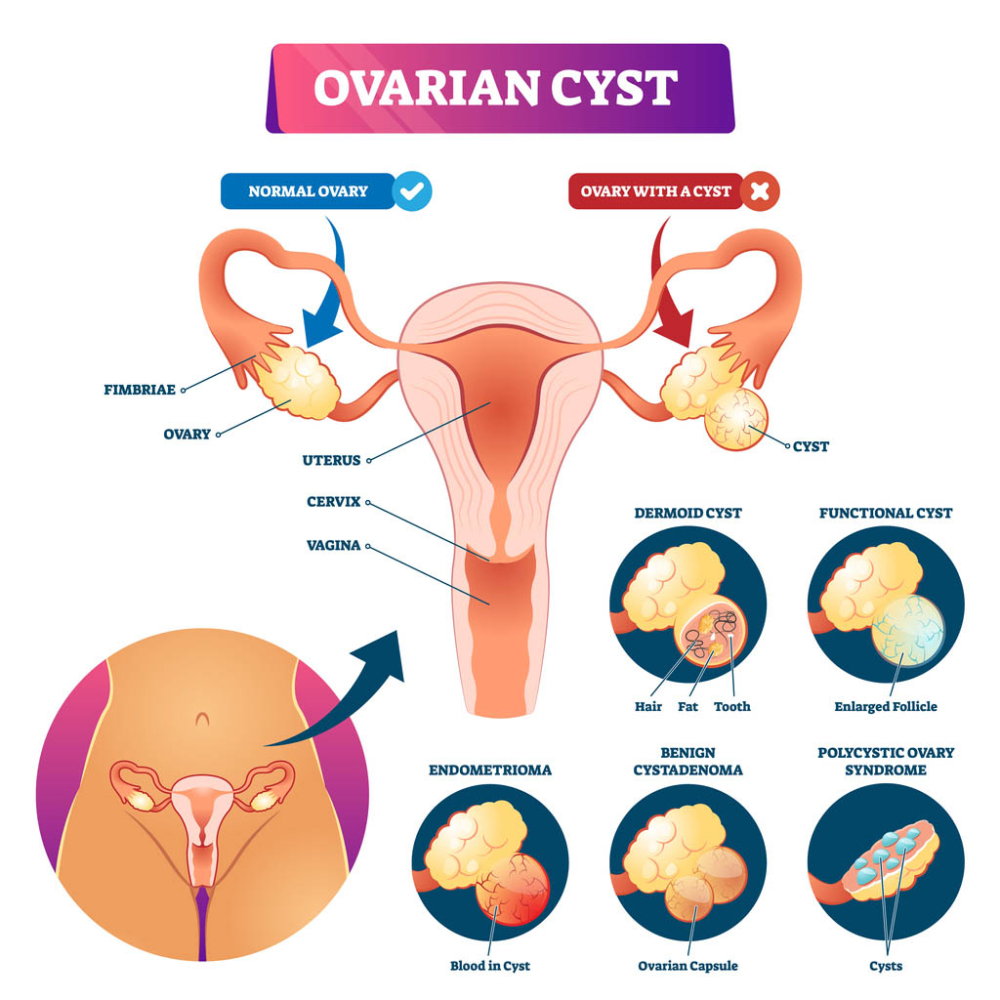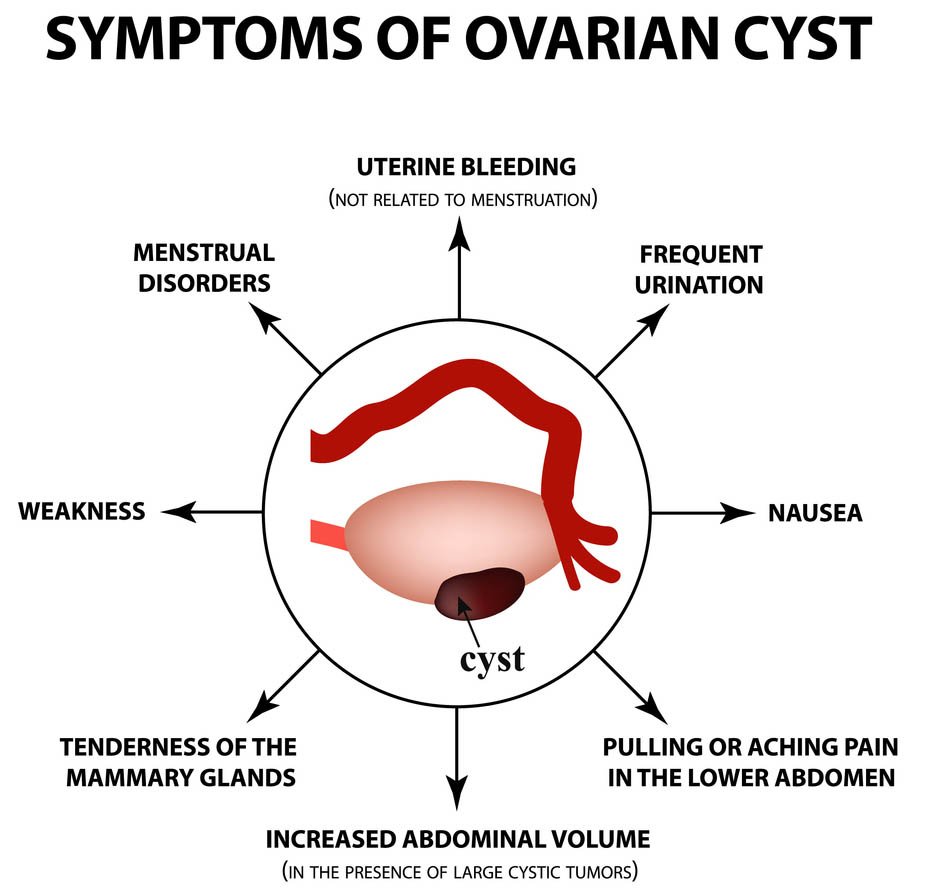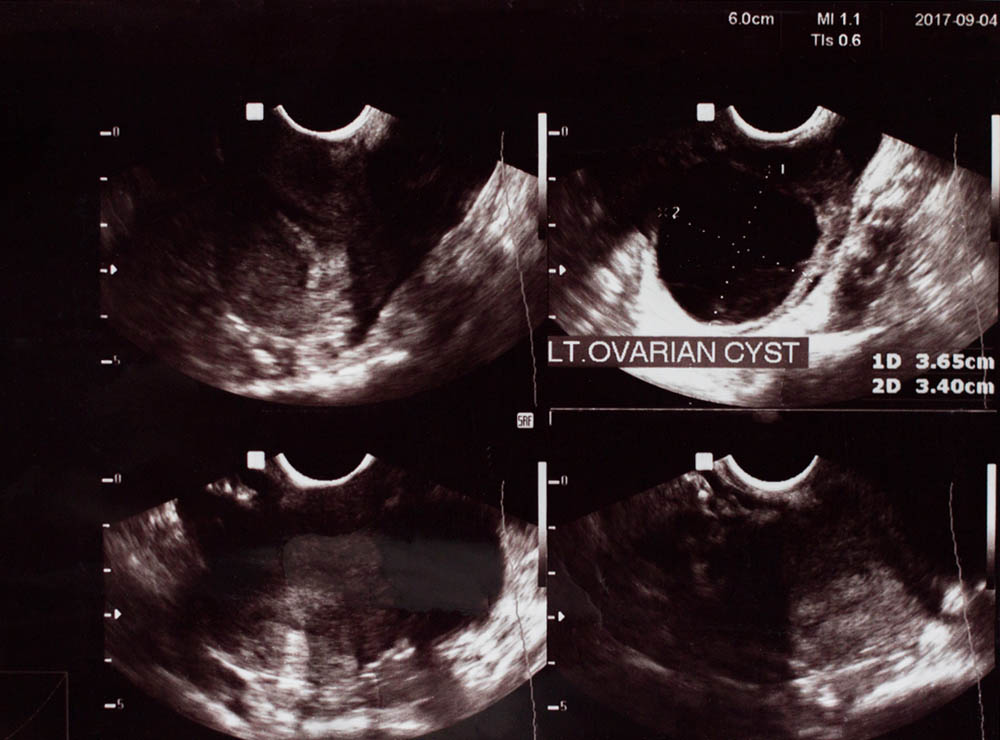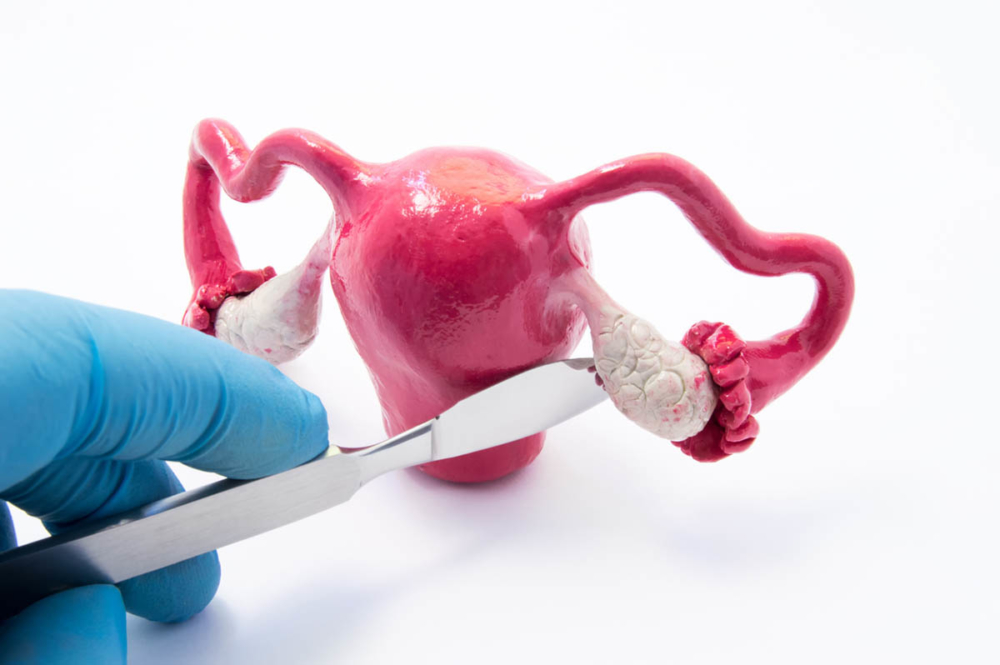Anatomically, women have two ovaries, one on each side of the uterus (womb). These tiny bean-shaped organs are essential parts of a woman’s reproductive system. During a woman’s childbearing years, the ovaries house the egg (ova) and release them monthly as part of the menstrual cycle.
Ovarian cysts are common, are typically harmless and rarely cause any discomfort. These are fluid-filled sacs that can be found on the surface or inside the ovary. Ovarian cysts may develop on both ovaries at the same time but may only affect just one. You might get one monthly and never know it. Most of the time, ovarian cysts do not cause for alarm as they usually go away on their own without treatment or medical interventions. In some cases, however, ovarian cysts can have severe symptoms and can even rupture and cause serious problems.
What are the different types of ovarian cyst?
1. Functional cysts
Every month, the ovaries grow follicles or cyst-like structures where their main function is to release the egg during ovulation and produce the estrogen and progesterone hormones. Two types of functional cysts can form:
- Follicular cyst. When the follicle doesn’t break open and release the egg, a follicle cyst is formed.
- Corpus luteum cyst. After releasing the egg, the follicle usually closes up and prepares for the next egg. However, it can become a cyst when fluid builds-up inside the follicle.
Typically, most ovarian cysts are caused by functional cysts. They are usually benign, cause little to no pain at all and often go away in two or three menstrual cycles.
These are cysts that do not serve a normal function in relation to a menstrual cycle.
- Cysts that are formed when endometrial tissue grows in the ovaries.
- Made up of diverse mature tissues like hair, muscle, teeth or bone that arise from embryonic cells that are retained within the ovary. They are also called dermoid cysts.
- Cysts that are filled with mucous type material and develops from ovarian tissues or grow on the surface of the ovary.
These cysts are cancerous but teratomas and cystadenomas can become large ad cause the ovary to twist (ovarian torsion) and result in severe pain and weakness. Also, some women can also develop a lot of small cysts and this condition is called polycystic ovary syndrome (PCOS) and can cause irregularities in the menstrual cycle.
What are the symptoms of ovarian cyst?
Typically, most ovarian cysts do not exhibit symptoms and disappear over time. Sometimes, however, ovarian cysts become bigger or ruptured ovarian cysts can cause the following symptoms:
- Mild to severe pelvic pain
- Constant Bloating
- Pain during intercourse
- Irregular menstrual cycles
- Heavier or lighter periods than normal
- Frequent urination and difficulty in bowel movements
When should I see a doctor?
If you experience any of these symptoms, see a doctor right away:
- Sudden or sharp pelvic or abdominal pain
- Severe pain accompanied by vomiting
- Lightheadedness or abrupt weakness
- Rapid breathing
How are ovarian cysts diagnosed?
Ovarian cysts can be diagnosed through a pelvic exam. During this time, your doctor will ask questions in relation to the extent of pain and related symptoms. To determine the severity of ovarian cysts and plan out a treatment plan specific for your case, your doctor may also require the following tests:
- Pelvic ultrasound
- Laparoscopy (A hand-held lighted device used to view the ovaries through an incision)
- Pregnancy test (A positive test can suggest a corpus luteum cyst)
- Diagnostic blood tests
What are my treatment options?
Like stated, ovarian cysts removal is not always necessary as they usually go away on their own over time. However, Dr PK Tan from PK Women’s Specialist Clinic in Singapore warns, if your doctor discovers suspicious cysts during a pelvic exam or your cysts cause constant severe pain, he/she may recommend the following treatments:
1. Watchful waiting
Simply put, your doctor may not recommend immediate treatment yet but will require close monitoring through ultrasound scans for a course of weeks to months to see if the ovarian cyst disappears on its own or persist to grow even larger. Women past menopause may be required to have routine blood tests as they have higher chances of developing ovarian cancer.
If results from ultrasound scan how that the cyst has gone away, treatments aren’t usually required. However, when the cyst has not disappeared or has grown in size, further tests and treatments are necessary.
2. Medication
To help you manage the pain, your doctor may give you pain-relieving medications. In addition, to keep ovarian cysts from coming back, your doctor may prescribe medications like birth control pills. However, an existing ovarian cyst cannot be treated by hormonal contraceptives and may require surgery to be completely removed.
3. Surgical procedures
Large and persistent ovarian cysts that cause severe symptoms will require surgery. Your doctor may recommend any of the following surgical procedures:
- Ovarian cystectomy (cyst removal without removing the ovary)
- Oophorectomy (removal of affected ovary)
- Laparoscopy (removal of smaller cysts)
- Laparotomy (a more invasive procedure that removes cysts that can be cancerous)
What is the best treatment option for me?
Generally, your doctor has the final say what type of treatment is most appropriate for your ovarian cysts depending on the following factors:
- Type of ovarian cyst that you have
- The size of your ovarian cyst
- Symptoms that you are experiencing
- Your age (women who have had menopause have a higher risk or ovarian cancer)
It is important to note that there is no such thing as one size fits all type of treatment as every condition is unique and response to treatment can vary from person to person.










